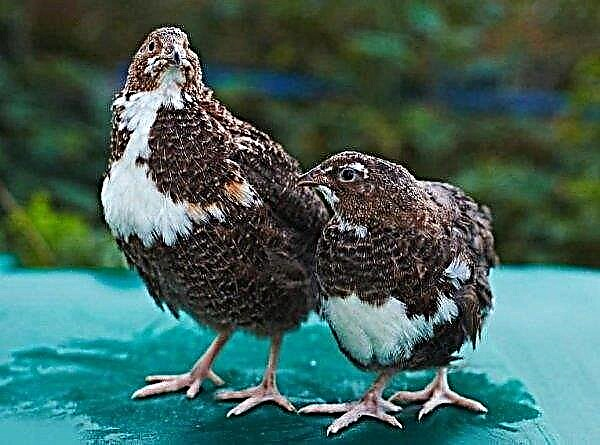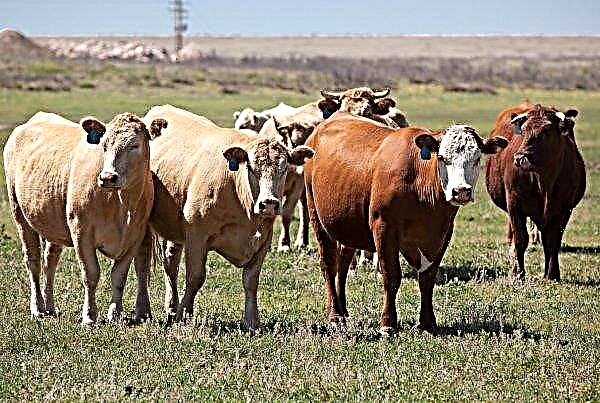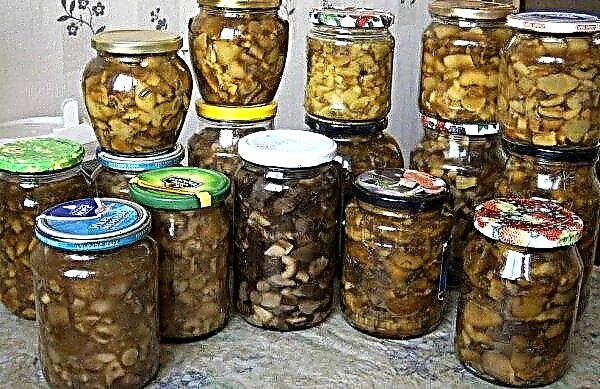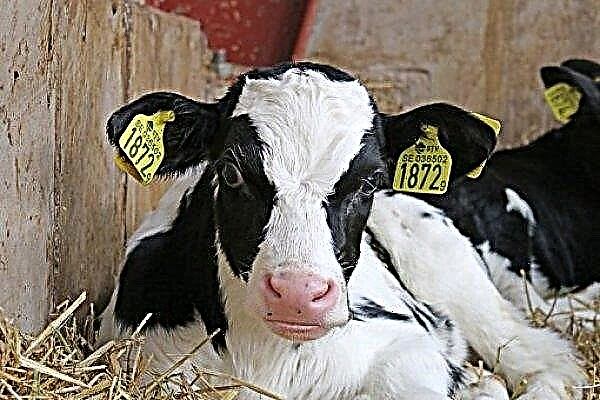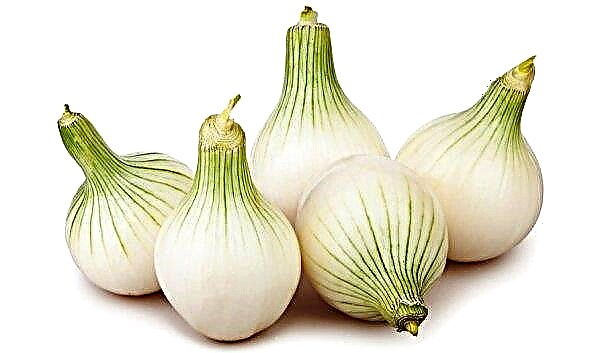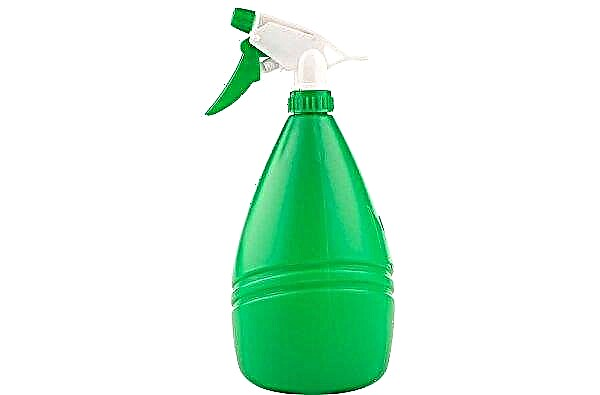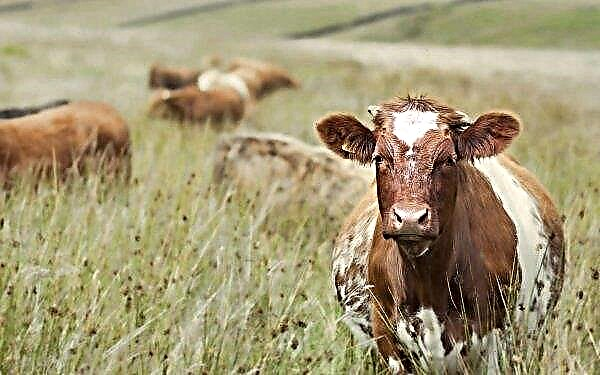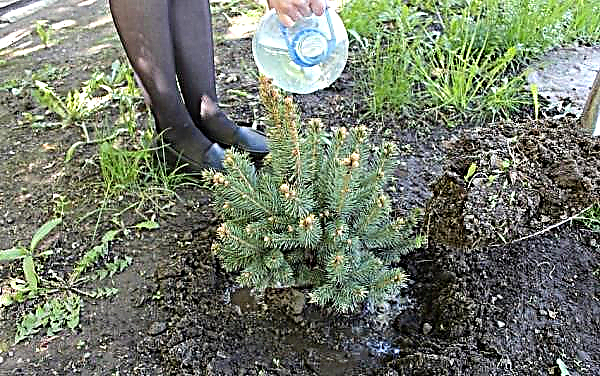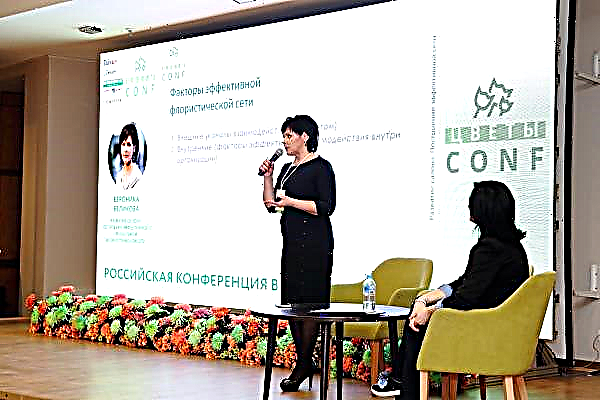The level of egg laying in chickens depends on the quality of the diet. To achieve maximum productivity, you need to know the better to feed the hens.
How much feed per day should be given to hens: consumption norms
When breeding chickens, it is important not only what they eat, but also consumption norms. Malnutrition and overeating have the same negative effect on bird productivity and health.
How many times a day to feed chickens depends on the time of year:
- in the spring-summer period - 2 times a day;
- in the autumn-winter period - 3-4 times a day.
In the summer, the diet of chickens includes not only the food they produce, but also grazing. This must be taken into account when preparing the menu. In the autumn-winter period, the productivity of chickens decreases, they begin to molt, and the bird's body needs more energy to heat. Therefore, portions increase and give food more often.
Youngsters under the age of 48 weeks are also fed 4 times a day.
When compiling a diet, it is important to consider how much feed is needed for one bird per day. 250-300 g of feed per day is spent on feeding one chicken.
Types of feed for feeding chickens
The chicken diet should include:
- moist mixers, including boiled root crops;
- cereals;
- sunflower meal;
- a piece of chalk;
- yeast;
- meat and bone meal;
- salt.
Salt is a necessary element of the diet of a bird (especially one that does not often have the opportunity to be in the fresh air). Most often it is added to the composition of wet mash, at the rate of 3-5 grams of salt per 1 kg of feed. This element allows you to adjust the water-salt balance in the bird's body.
Its use is the prevention of gastrointestinal diseases, accompanied by a change in microflora. Lack of salt negatively affects the development of muscle mass, the state of the digestive and nervous systems.
Hens need salt from birth. If you do not enter it into the diet, chickens aged 21–45 days peck each other to the blood.
Food should be varied. When using the same type of nutrition, chickens get less nutrients, become lethargic and lose productivity. In the summer, with an abundance of green fodder, one wheat can be left from cereals.
But in the winter, chickens will need the most diverse diet, including calcium and other mineral compounds lost during the egg-laying season. From 250-300 g of the total daily feed weight, cereals should be only 50 g in the summer and 100 g in the winter (otherwise the bird is obese).
From 250-300 g of the total daily feed weight, cereals should be only 50 g in the summer and 100 g in the winter (otherwise the bird is obese).
Important! Introducing salt into the diet, take care of the constant availability of clean drinking water in the bird on the walking area and in the chicken coop. Constant thirst often causes a decrease in productivity.
How to feed chickens with grain
Cereals are the basis of the diet of chickens of any direction.
Each culture has its own properties that must be considered when introducing them into the diet:
- wheat - rich in vitamins E, B and proteins. Accelerates the set of muscle mass, increases productivity. It is used in dry and sprouted forms. The diet should have 80-100% of the grain in the summer, 40% in the winter;
- rye - It is rich in trace elements necessary for the full development of the avian organism. Consumption rate - 40%;
- oats - rich in fiber, satisfies hunger, speeds up metabolism. It needs 10%;
- corn - It is introduced into the diet with extreme caution, as it contains a large amount of fats and carbohydrates and can cause obesity. Norm - not more than 10% in the summer, 20-30% - in the winter;
- barley - quickly saturates the bird's body with micronutrients. The percentage of the diet is up to 40%.
It is important not only how the bird feeds, but also its processing. The grain requires grinding and steaming, as too large sharp elements can damage the larynx of the bird. In summer, crushed cereals can be used; in winter, grain is sprouted to make up for the lack of greenery.
How to germinate wheat at home
Below is a step-by-step instruction for germinating wheat grains at home:
Find out more

- Get special seed germination.
- Inspect the material for integrity of the upper shell.
- Prepare glassware for soaking.
- Wash the grains under running water and put them in a bowl.
- Pour warm water (temperature + 20–25 ° С) so that it covers wheat 5 cm higher and leave overnight.
- Grains that pop up, immediately remove.
- Wash the wheat in the morning and spread it into a 1 cm layer on a three-fold wet gauze.
- Cover with gauze on top and watch for its moisture - it should be within 80%. As the gauze dries (and therefore the planting stock), spray it from the spray bottle with room temperature water.
- Rinse grains in the morning, afternoon and evening to prevent mold.
- After 48 hours, when the sprouts reach a length of 2-3 cm, grains can be given to hens.
Similarly, you can sprout any crops. Give them to the bird before going to bed or enter into the composition of wet mash mats in the morning. Consumption rates - 60–70%.
Barley
Barley is introduced into the diet of chickens from 3 weeks. If you start introducing it later, the bird may refuse to consume it due to its specific taste. Previously, the grains need to be cleaned from the hymen and chopped.
An adult bird can be given whole grains or made from them coarse flour, and then add it to wet mixers. Barley is not given during molting and in winter.
Oats
Oats have a beneficial effect on the reproductive system of chickens. Before use, it must be cleaned and ground. In the summer, the norm of its consumption is 40%, in winter the norm is reduced to 40%.
In addition to protein compounds, oats contain a large amount of fiber, which takes a lot of time and energy to digest. This can lead to freezing of the laying hens in winter.
How to give meat and bone meal to chickens
The quality of pulp meal is divided into 3 classes:
- prevail in the composition of protein, fat and ash in moderation;
- protein is contained in sufficient quantities, but the percentage of fat and ash is increased;
- It is characterized by a low protein content and an increased percentage of dir with ash.
It is best to take first-class meat and bone meal. Pay attention to product quality.
Important! Meat and bone meal should be stored in a dark, cool room at a temperature of no more than +20 ° C. If storage rules are not followed, the mist contained in the additive decomposes, releasing acrolein aldehyde, which leads to the death of chickens with further use of the product.
Take a closer look

When soybeans are added, the color of the product turns greenish.
Enter meat and bone meal in the diet of chickens according to the following scheme:
- 6–10 days of life - 0.5–1 g / per head;
- 11–20 days - 1.5–2 g;
- 21-30 days - 2.5-3 g;
- 31–63 days - 4–5 g.
The rate of flour supplement in the chicken diet should not exceed 6% of the total feed mass. An adult gets it on a day of 7–11 g. When these dosages are exceeded, chickens develop gout and amyloidosis.
How to cook a chicken stirrer
In the morning, wet chickens can be given to chickens. They are a natural alternative to animal feed. Mixers give chickens from birth - food in this form is quickly processed by the young bird's body and enriches it with nutrients. The composition of the mixers will depend on the age category of the bird:
The composition of the mixers will depend on the age category of the bird:
- chickens up to 1 week old - milk, hay dust, oatmeal;
- chickens from the age of 10 days - crushed corn, wheat, yeast, fish meal, hay dust, chalk;
- adult hens - root crops, broth (milk), eggshell, chalk, shells, meal, cake.
All hard ingredients are boiled in milk or meat broth, and loose components (flour, chalk) are added. Then the mixture is thoroughly mixed. For each chicken, 100 g of mash mix is accounted for (given that the average daily feed intake is 250–300 g).
The prepared mixture should be used no more than 3 hours. The remnants of food are immediately cleaned, otherwise the chickens will fall ill.
Bread
Bread is introduced into the diet only as a treat. You can give it no more than once every 2-3 weeks. Consumption rate - no more than 10% of the total amount of feed. Excessive consumption of bakery products leads to obesity in poultry and digestive disorders, a decrease in egg production.
Fresh bread is especially harmful. It tends to swell in the stomach, turning into a tight lump, which causes suffocation and can cause the death of hens. Rye bread is also dangerous for chickens - it contains too much salt and elements that increase acidity in the digestive tract. It is contraindicated to introduce bread into the diet of poultry contained in aviaries. Reducing physical activity in conjunction with such a diet will lead to blockage of blood vessels.
It is contraindicated to introduce bread into the diet of poultry contained in aviaries. Reducing physical activity in conjunction with such a diet will lead to blockage of blood vessels.
Important! Introduce bread into the diet of laying hens when the cold comes (and especially in winter), then it will not harm them. Dry the bakery products before serving and combine them with the sprouted grain in the blenders.
Vegetables
Chickens are given vegetables as part of wet mash or separately, and always in crushed form. The potatoes are boiled in their skins, and then chopped, mixed with milk and other ingredients. Such food can be given to chickens from 2-3 days. Raw potatoes, peeling and tops to chickens are contraindicated.
Carrots are served fresh. Grind it on a grater or meat grinder. The consumption of carrots is limited to 30 g per day per head. In the summer, you can feed chickens with carrot tops.
Beet consumption rates of 30-50 g per day per head. The product is served fresh, grinding it on a grater, or in boiled - as a part of wet mash. In the summer, give fresh leaves of beets.
Cabbage is an indispensable source of vitamins all year round. It is perfectly kept fresh. In winter, cabbages are suspended in a chicken coop, and chickens gradually sort it out into sheets. Consumption rates are not limited.
Onions are necessary to enhance the immunity of birds. It is added in small amounts to grated or finely chopped. Consumption rates for chickens - 5% of the total mass of feed, for adult poultry - 10%. Peas are not included in the diet until two weeks of age. It is worth considering that this culture is long and difficult to digest. In order to facilitate the digestion process, in combination with peas, sand or shell rock is produced. Peas are served crushed or in mixes. In the second case, it is boiled separately from the other additives.
Peas are not included in the diet until two weeks of age. It is worth considering that this culture is long and difficult to digest. In order to facilitate the digestion process, in combination with peas, sand or shell rock is produced. Peas are served crushed or in mixes. In the second case, it is boiled separately from the other additives.
Consumption rates - 6% of the total feed.
Bran
The use of bran allows you to quickly restore the energy balance in the body of the chicken after active oviposition. The share of bran in the diet of poultry should be 30-40%. The easiest way to introduce bran into the diet is to dilute them with hot water until the consistency of thick porridge.
For each chicken, approximately 20 g of product is consumed. Nutritious mixers can be improved by preparing it in milk or whey and adding boiled potatoes.
Important! On 1 tbsp. l dry bran need to add a minimum of 200 ml of liquid, otherwise, instead of a positive effect, the product will provoke constipation.
The supplement is administered gradually, from two weeks of age. The consumption rate for a chicken is 5 g, for an adult chicken - 30–40 g.
What are premixes for chickens: composition and rules of feeding
Premixes - complexes of vitamins, minerals - are necessarily added to the main diet of chickens. It is mandatory to introduce them, since the main diet is made up of crops that are poor in amino acids and vitamins. But this is just an additive, so she can not replace the main feed.
Premixes differ in composition.
Today on the market there are such types of additives:
- Vitamin - a complex of vitamin preparations;
- mineral - a complex of micro and macro elements;
- complex - a mixture of vitamin and mineral compounds;
- therapeutic - a mixture of drugs in prophylactic dosages;
- protein - consist of protein concentrates.
All premixes before use are mixed with a filler, which is used as bran, crushed wheat or fodder yeast. First, the mixture is combined with the filler in a ratio of 1: 1, and then introduced into the general feed according to the manufacturer's instructions.
Premixes are not added to wet mixers - most of the compounds contained in them lose their properties when reacted with a hot liquid. To increase egg productivity, 1 chicken accounts for 0.5–1 g of premix per day.
Compound feed for chickens
Mixers and premixes can be replaced with full-feed compound feeds designed for laying hens. The Purina and PK-5 firms produce a variety of feeds designed for any age of the bird. The packaging contains detailed instructions and dosages, the excess of which threatens obesity and a decrease in immunity.
Especially carefully you need to enter feed to the bird, which has limited mobility.
Vitamin Supplements
To fully develop and increase egg production, chickens need vitamins, which are not always enough in feed.
Felucen for chickens
The composition of “Felucene” includes the whole complex of vitamins and minerals.
Chickens begin to give it at the age of one and a half months. Laying hens add 7 g of substance to the total volume of feed. When using additives from the diet exclude salt, chalk, premixes.
Is it possible to give chickens yeast
Fodder yeast helps increase egg production. They are introduced taking into account live weight - 30 g / kg. Yeast is added to the feed, poured with warm water and insisted for 8-10 hours. For all this time, the food is mixed three times.
Take a closer look

- diarrhea;
- stagnation of fluid in the body (which leads to inflammation of the cloaca);
- cannibalism;
- disorders in the development of joints.
To reduce the risk of side effects, calcium supplements (such as meat and bone meal or eggshells) are introduced into the feed along with yeast. Fodder yeast is contraindicated in poultry under 1 kg.
Eggshell
Before giving eggshells to birds, it is fried in an oven, and then rubbed into powder. Sanitized shells can be added to the wet mixes or poured into separate containers located throughout the walking area and in the chicken coop.
Fish fat
The dosage of fish oil is strictly regulated. The supplement is given in weekly courses with a break of 10 days.
Youngsters, one and a half months old, fish oil is added to the feeder at the rate of 0.2 ml per head, for adult hens, the dosage is increased to 0.5 ml per head. A month before slaughter, the supplement is completely excluded from the diet.
Did you know? In addition to the food additive, there is technical fish oil used for technical purposes in the leather industry, in dyeing, in the manufacture of soap.
Is it possible to give foams to chickens, and why they peck it
Polyfoam is a building material, and this is its only purpose. If chickens eat polystyrene, their meat and egg products become toxic and unsuitable for human consumption.
Find out more

Reasons for eating polystyrene chickens:
- curiosity - bright crispy material is similar in structure to grain, so the bird is trying to taste it;
- lack of salt - the composition of the foam includes sodium chloride;
- "drug addiction - the foam releases the toxic substance pentane into the air, which when inhaled has a narcotic effect.
How to feed chickens in winter
In the winter, chickens are transferred to four meals a day.
An approximate daily diet of chicken should include:
- 100 g of a stirrer of potatoes, beets, bran;
- 120 g of grain - 40 g of corn and wheat, 20 g of barley and oats;
- 30 g of additives - salt, chalk, meat and bone meal, yeast, oilcake.

How to feed laying hens to rush better
To increase egg production, you need to alternate all the above types of feed.
The main thing is to ensure the entry into the body of a bird of some elements, among which:
- proteins;
- carbohydrates;
- vegetable and animal fats;
- cellulose;
- vitamins and minerals.
When feeding poultry with compound feeds, carefully study their composition. The presence of growth hormones there is a serious reason to abandon its use.
What can not be fed chickens
We feed the chickens correctly, excluding the following foods from the diet:
- sprouted, green potatoes and its tops;
- fresh baked goods;
- moldy products;
- Styrofoam;
- sausages;
- sweets.
Did you know? A rooster in a chicken flock is necessary not only for procreation. He is in control of the regime of the day, raising the whole flock in the morning and inviting him to sleep in the evening. It resolves conflicts between females, and also protects fellow tribesmen from attacks by small animals.
Hens are unpretentious regarding feed. To increase their productivity and maintain health, the diet should be balanced and include a variety of types of feed.


